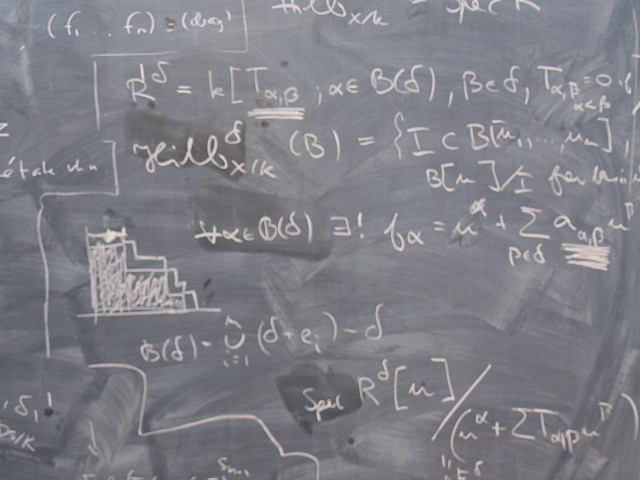- Sum and product formulas of the sine and cosine functions.
- Complex numbers, including use of the jw-method.
- Geometric series, Taylor and Fourier series.
- Differential equations applied on electronics, thermodynamics and mechanics.
- Solving linear differential equations of the first and the second order.
- Solving linear differential equations with trigonometric right-sides.
- Solving differential equations using integrating factor.
- Solving linear differential equations using variable separation.
- Computer exercises represent a significant part of the course: comparison between original functions and serial expansions, equation solving, derivation, integration and solving differential equations using numerical aids.
- Elementary principles of numerical derivation, integration and solution of differential equations.
HN1001 Applied Mathematics 7.5 credits

Content and learning outcomes
Course contents
Intended learning outcomes
The course aims to provide knowledge to interpret natural and technical systems in terms of differential equations. When given text based problems, the student should be able to reformulate them as differential equations and solve them. If they can not be solved analytically, the student should be able to solve them by numerical methods (using computer aids).
The course should provide basic skills for coming courses involving transformation theory, by studying series, such as geometric series, Taylor- and Fourier series.
After finishing the course, the students should
- Be able to perform calculations using complex numbers, and then work with complex numbers in rectangular and polar form.
- Be able to formulate differential equations based on natural and technological problems.
- Be able to solve linear differential equations of first and second order as well as differential equations with trigonometric right-sides.
- Be able to use numerical tools for solving equations, differential equations and perform derivations and integrations.
Literature and preparations
Specific prerequisites
Basic mathematics corresponding to e.g. HN1901 “Matematik I”.
Basic computer skills.
Basic knowledge in programming e.g. in C, Pascal, MATLAB or similar. Eg. HM1007
Recommended prerequisites
Equipment
Literature
Mathematics for Engineers: A Modern Interactive approach
by Tony Croft, Anthony Croft, Robert Davison. Edition 3, illustrated
Published by Pearson Education, 2008
ISBN 0132051567, 9780132051569
Examination and completion
If the course is discontinued, students may request to be examined during the following two academic years.
Grading scale
Examination
- LAB1 - Laboratory Work, 3.0 credits, grading scale: P, F
- TEN1 - Examination, 4.5 credits, grading scale: A, B, C, D, E, FX, F
Based on recommendation from KTH’s coordinator for disabilities, the examiner will decide how to adapt an examination for students with documented disability.
The examiner may apply another examination format when re-examining individual students.
Other requirements for final grade
Written exam
Computer exercises
The final grade is based on written examination, grades A-F.
Opportunity to complete the requirements via supplementary examination
Opportunity to raise an approved grade via renewed examination
Examiner
Ethical approach
- All members of a group are responsible for the group's work.
- In any assessment, every student shall honestly disclose any help received and sources used.
- In an oral assessment, every student shall be able to present and answer questions about the entire assignment and solution.
Further information
Course room in Canvas
Offered by
Main field of study
Education cycle
Add-on studies
Supplementary information
The course consists of lectures, exercises, compulsory lab work, and self studies.